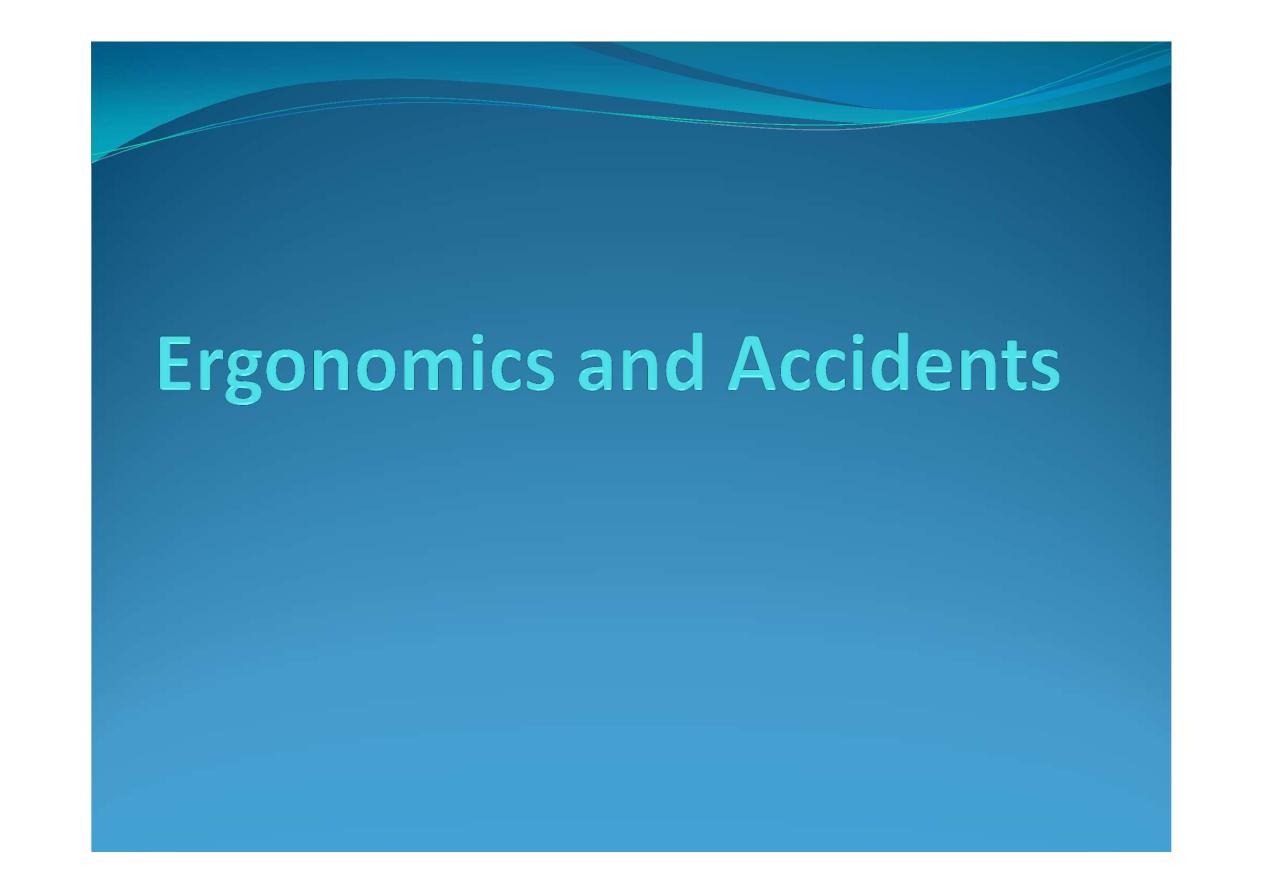
By
Ashraf Hussain
MBChB. PhD. Com. Med.

Ergonomics
ERGONOMICS means designing jobs, equipments, and
work tasks to fit human physical characteristics and
energy limitations.
The CONCEPT OF ERGONOMICS is to
“Make the
work fit the person, not the person fit the work”

Benefits of Ergonomics
Safer jobs with fewer injuries
Increased efficiency and productivity
Improved quality and fewer errors
Improved morale

The
International Ergonomics Association
defines
ergonomics or human factors as follows:
Ergonomics (or human factors) is the scientific
discipline concerned with the understanding of
interactions
among humans and other elements of a
system, and the profession that applies theories,
principles, data and methods to
design
in order to
optimize human well-being and overall system
performance.

IEA (International Ergonomics Association)
lists three broad specializations:
1.
Physical ergonomics
is concerned with human
anatomy, and some of the anthropometric,
physiological and bio mechanical characteristics as
they relate to physical activity.
An example of its concern are the working postures,
manual handling operation, repetitive movements,
work-related muskuloskeletal disorders.

Anthropometry
Anthropometry is the science of measurement of the
human body.
Ensure that workers have sufficient space to perform
their tasks.
They can reach necessary equipment and tools
Barriers keep them out of reach of hazards.
working postures can be optimised for the range of
people using them

Environmental ergonomics
In addition to the physical design of the working
environment, the environment itself (temperature,
lighting, noise, etc.) can have a significant effect on the
health, safety and performance of workers. For
example, elevated temperatures can impair
concentration, increasing human error and the risk of
accidents, as well as creating a risk of heat-related
illness.

Musculoskeletal disorders
Can affect the body's muscles, joints, tendons,
ligaments, bones and nerves.
Most work-related MSDs develop over time and are
caused either by the work itself or by the employees'
working environment.
They can also result from accidents, e.g. fractures and
dislocations.

Typically, MSDs affect the back, neck, shoulders and
upper limbs; less often they affect the lower limbs.
Health problems range from discomfort, minor aches
and pains, to more serious medical conditions
requiring time off work and even medical treatment.
In more chronic cases, treatment and recovery are
often unsatisfactory - the result could be permanent
disability and loss of employment.
Many problems can be prevented or greatly reduced by
complying with existing safety and health law and
following guidance on good practice.

1.
Warm up and stretch before activities that
are repetitive, static or prolonged.
2.
Take frequent breaks from any sustained
posture every 20-30 minutes
3.
Avoid repetitive or prolonged grip activities.
4.
Use the largest joints & muscles to do the job
5.
Use 2 hands to lift rather than one, even with
light objects and tasks.
Safe work practice training:
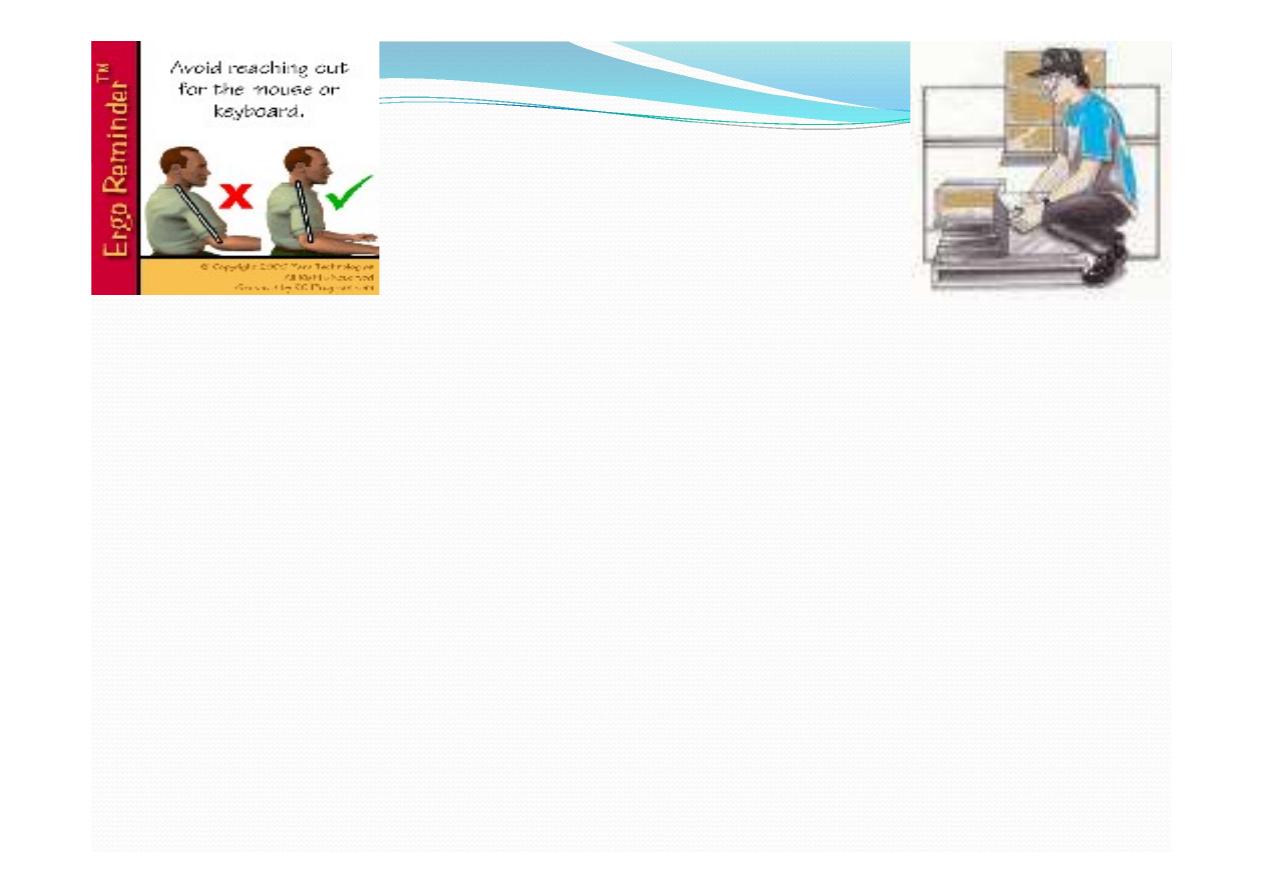
6.
Avoid lifting while the forearm in full pronation
(palm down) or supination (palm up)
7.
Slide or push & pull objects instead of lifting.
8.
Carry objects close to body at waist level
9.
Always respect pain, change position or stop
painful activity.
10.
Recognize early signs of inflammatory process
and treat early.
Body Mechanics

2. Cognitive ergonomics
: concerned with mental processes
such as perception, memory, reasoning and motor
response .
It include mental workload, decision making, skilled
performance, human computer interaction, work
stress and training.
3.Organizational ergonomics
It takes into account factors
ranging from the design of workstations to the
scheduling of rest breaks and job rotation schedules to
human resources issues such as promotion
opportunities.
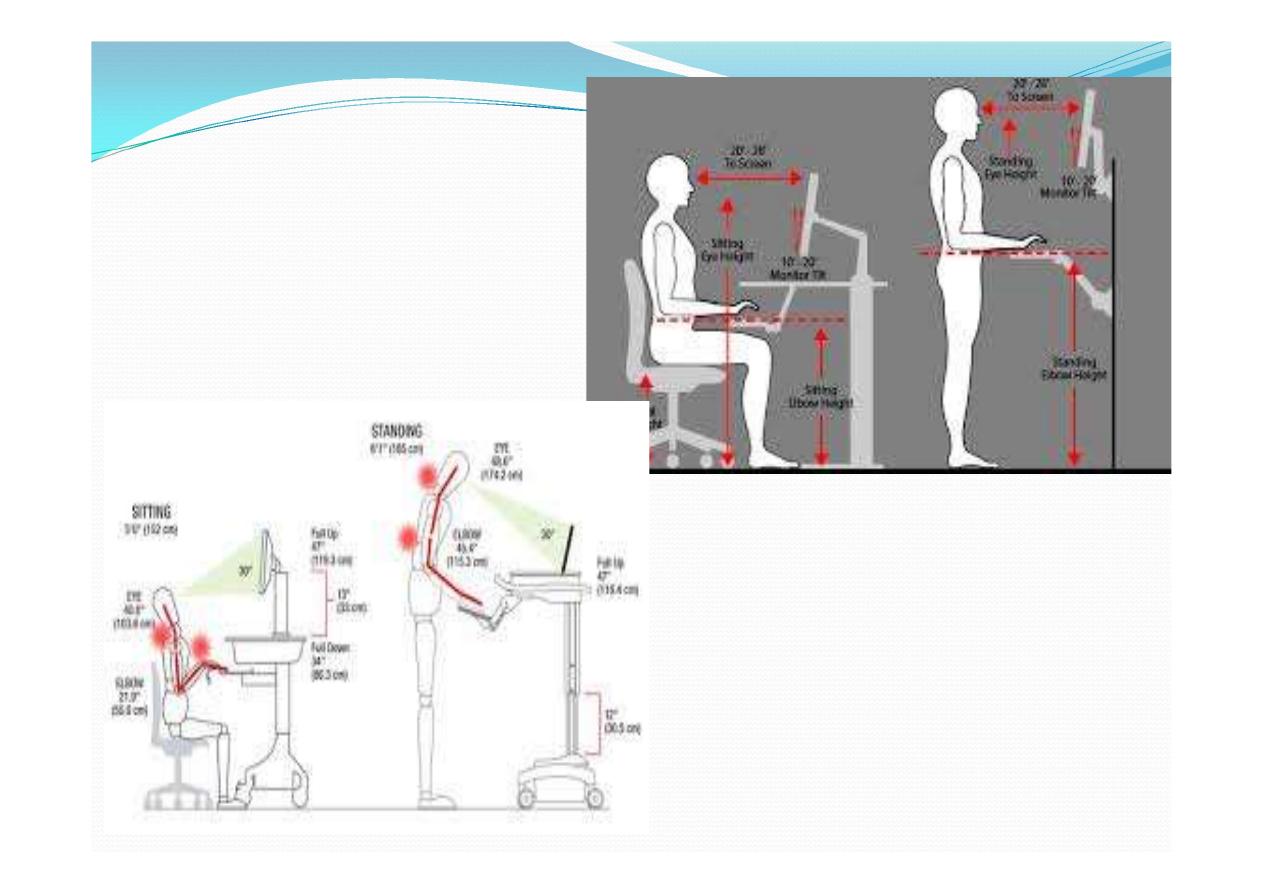
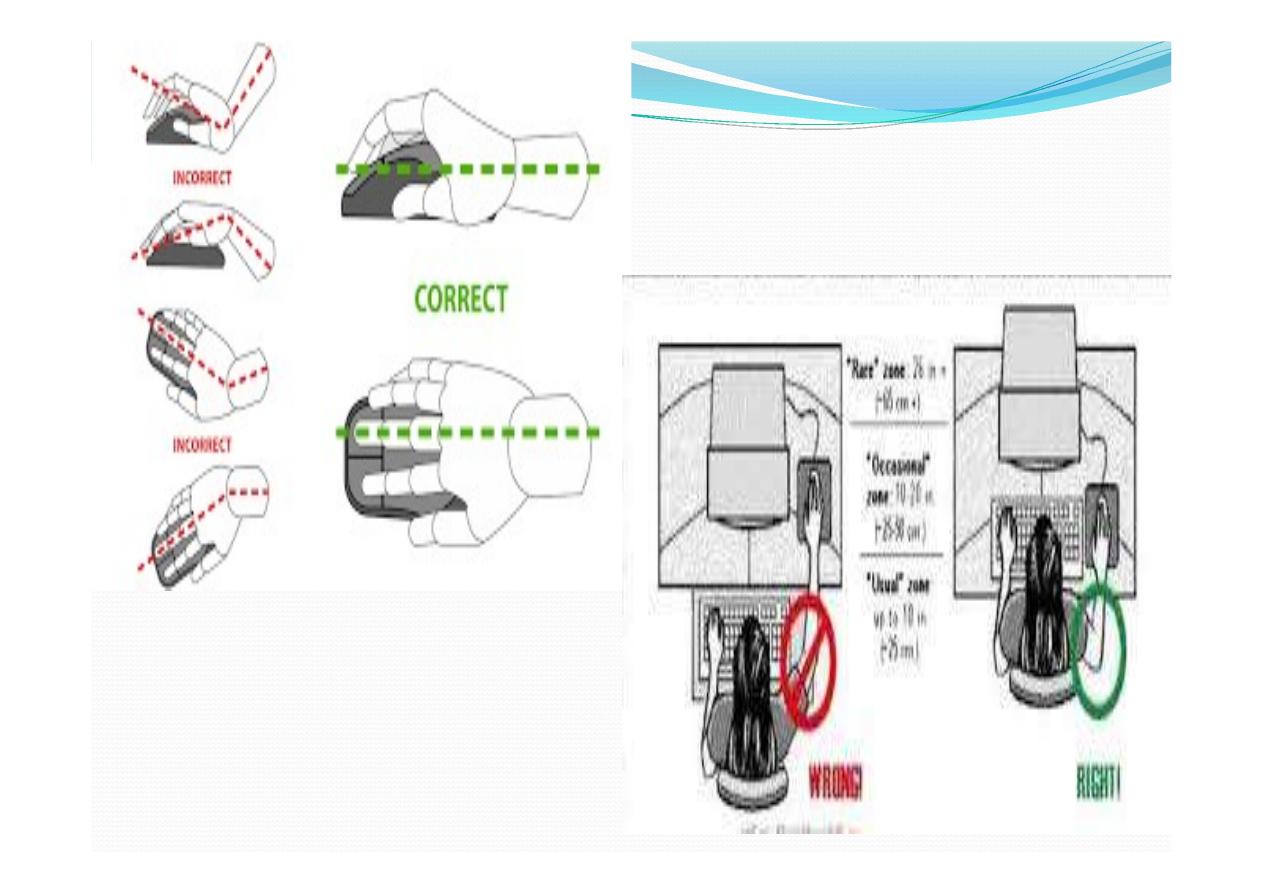
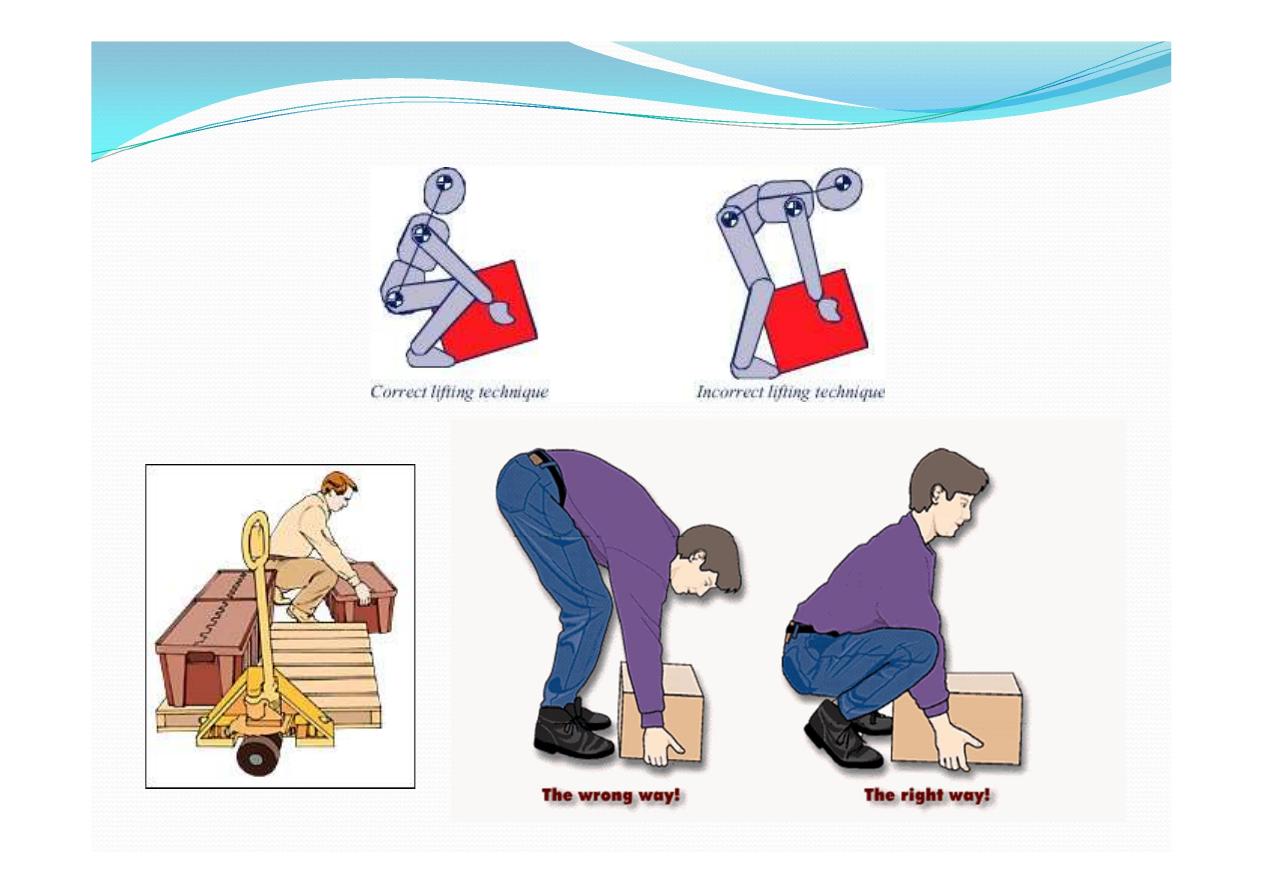
Correct & Incorrect Techniques
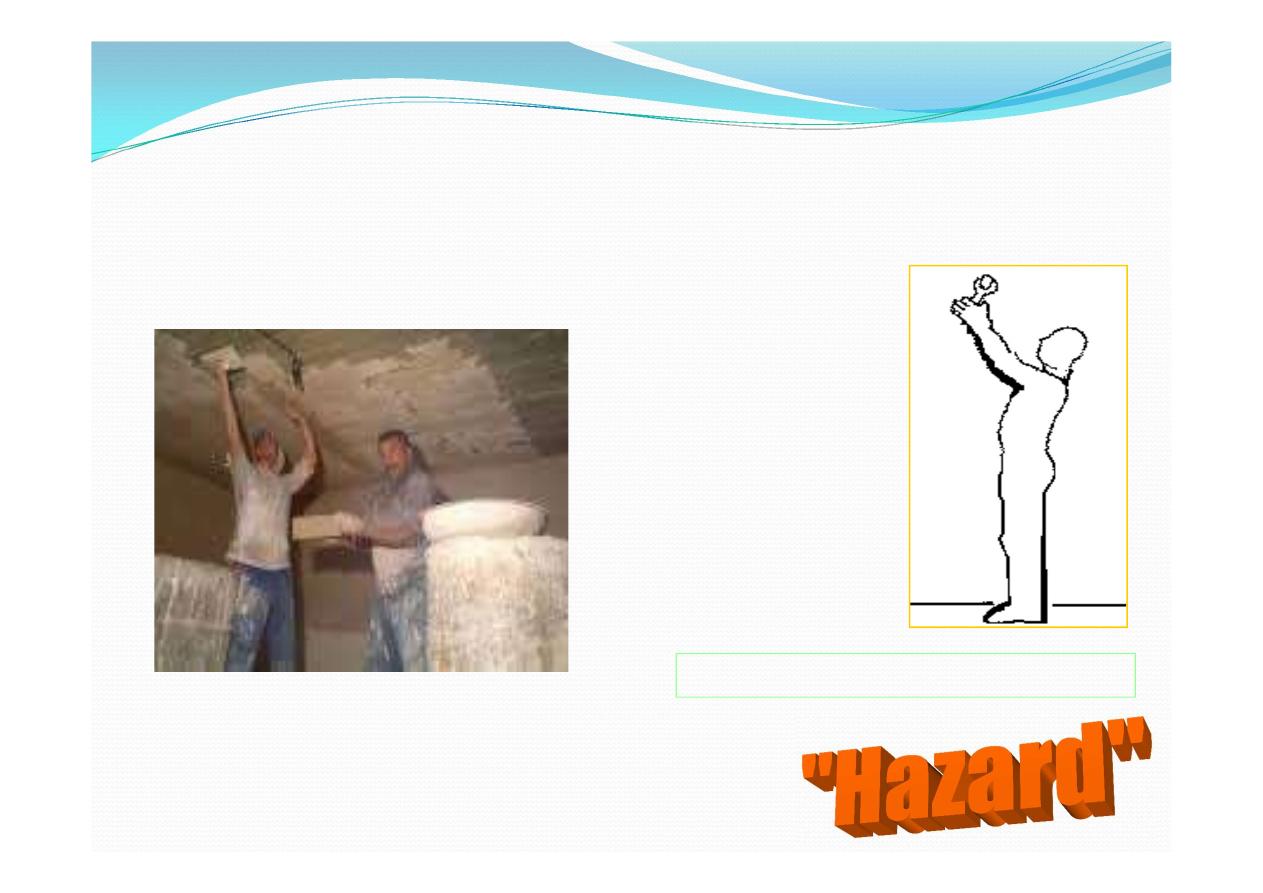
Awkward Postures
•Shoulders:
H
ands above Head
Elbows above shoulders
For More Than 4 hrs/day
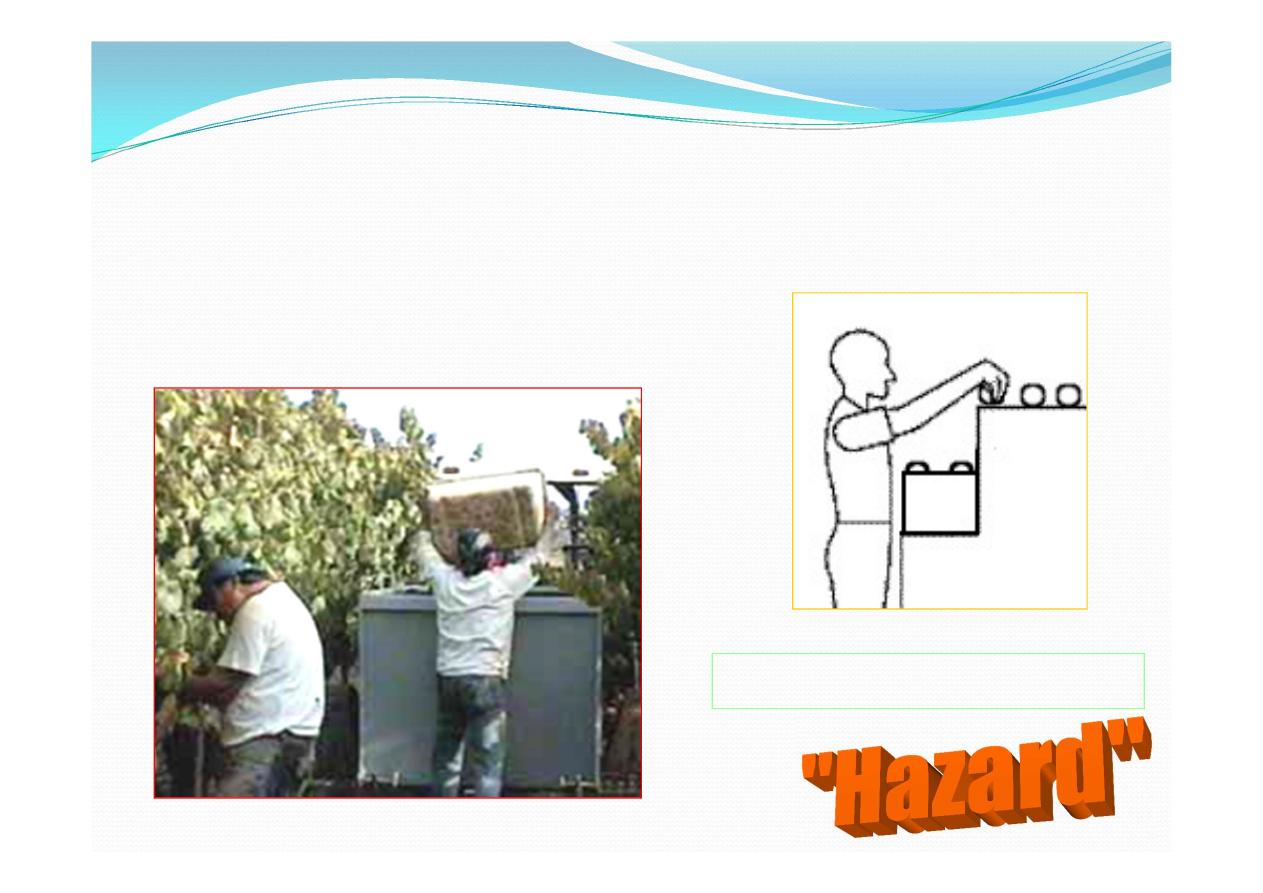
Awkward Postures
•Shoulders:
Repetitive raising >once/minute
For More Than 4 hrs/day
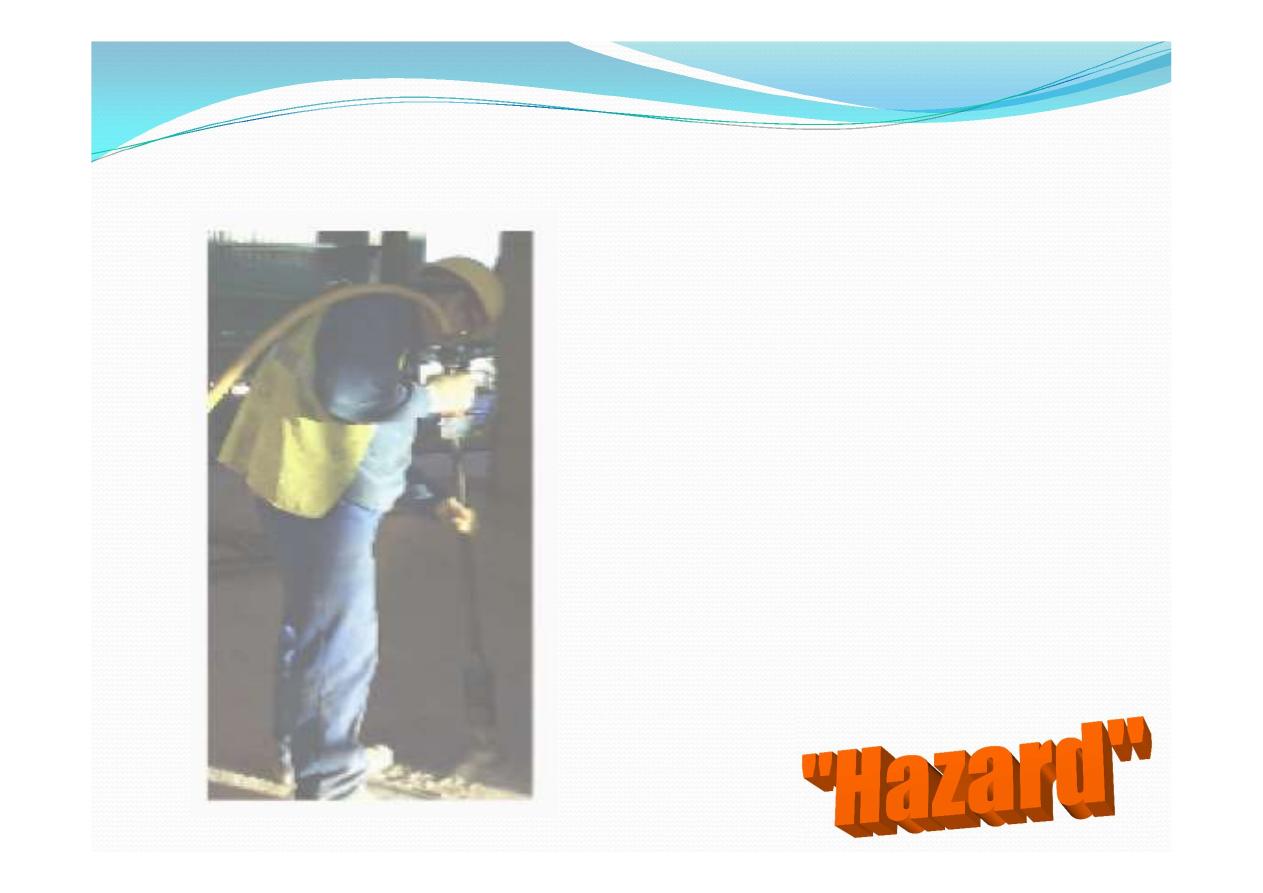
Awkward Positions
•Neck
–Bent >45° without support or ability
to vary posture
More than 4 hrs/day
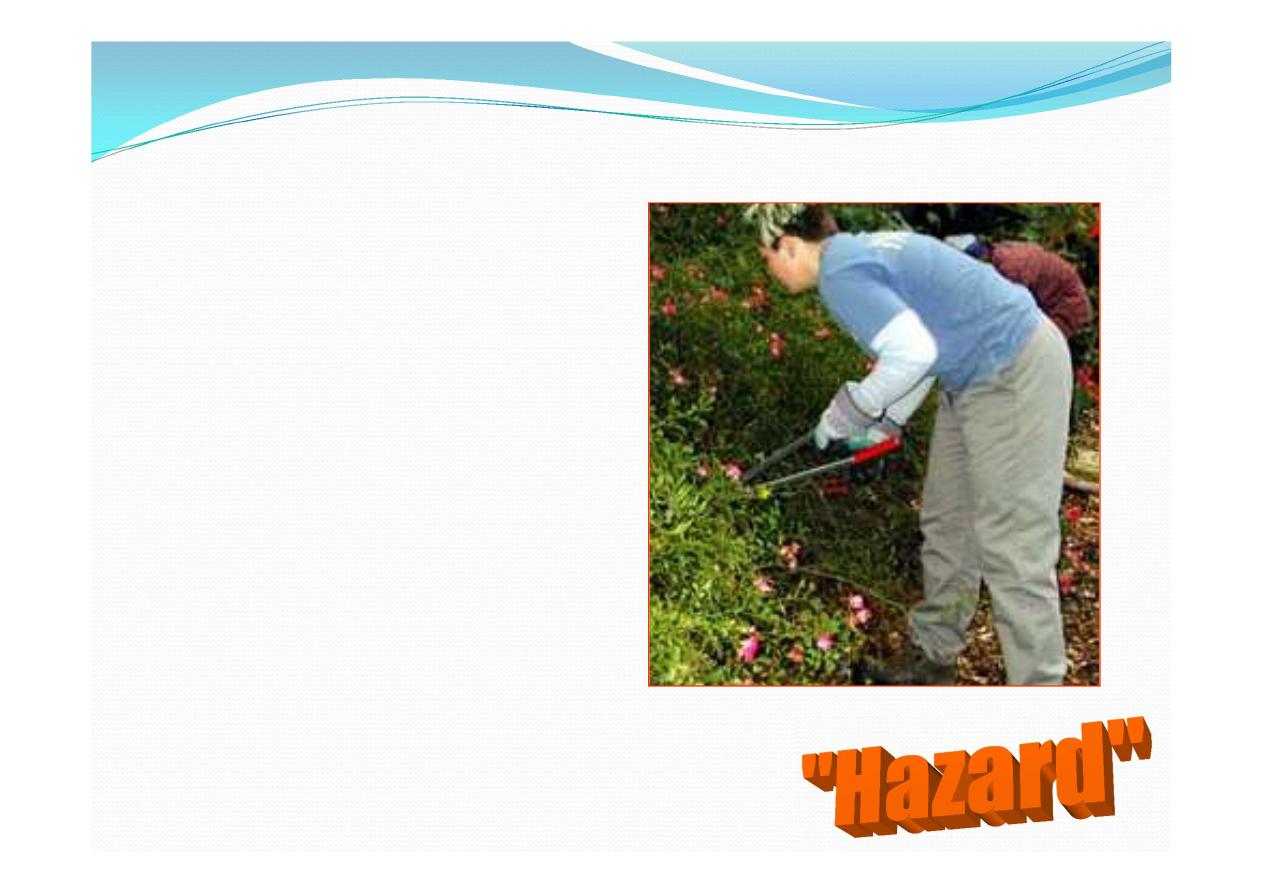
Awkward
Positions
•Back
–Bent forward >30° Without
support or ability to vary
posture
More than 4 hrs/day
–Bent forward >45° Without
support or ability to vary
posture
More than 2 hrs/day
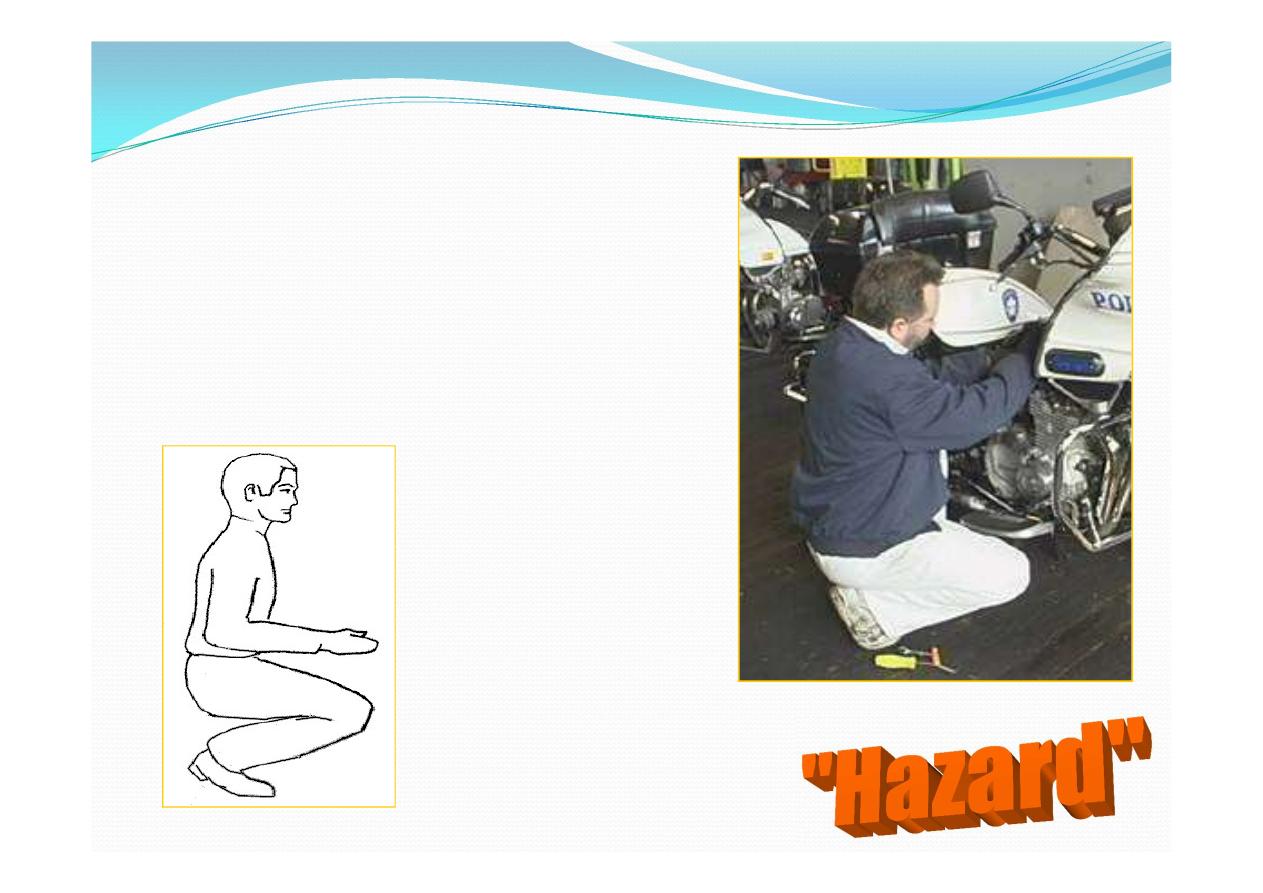
•Knees -
Squatting
More than 4 hrs/day
Awkward Positions
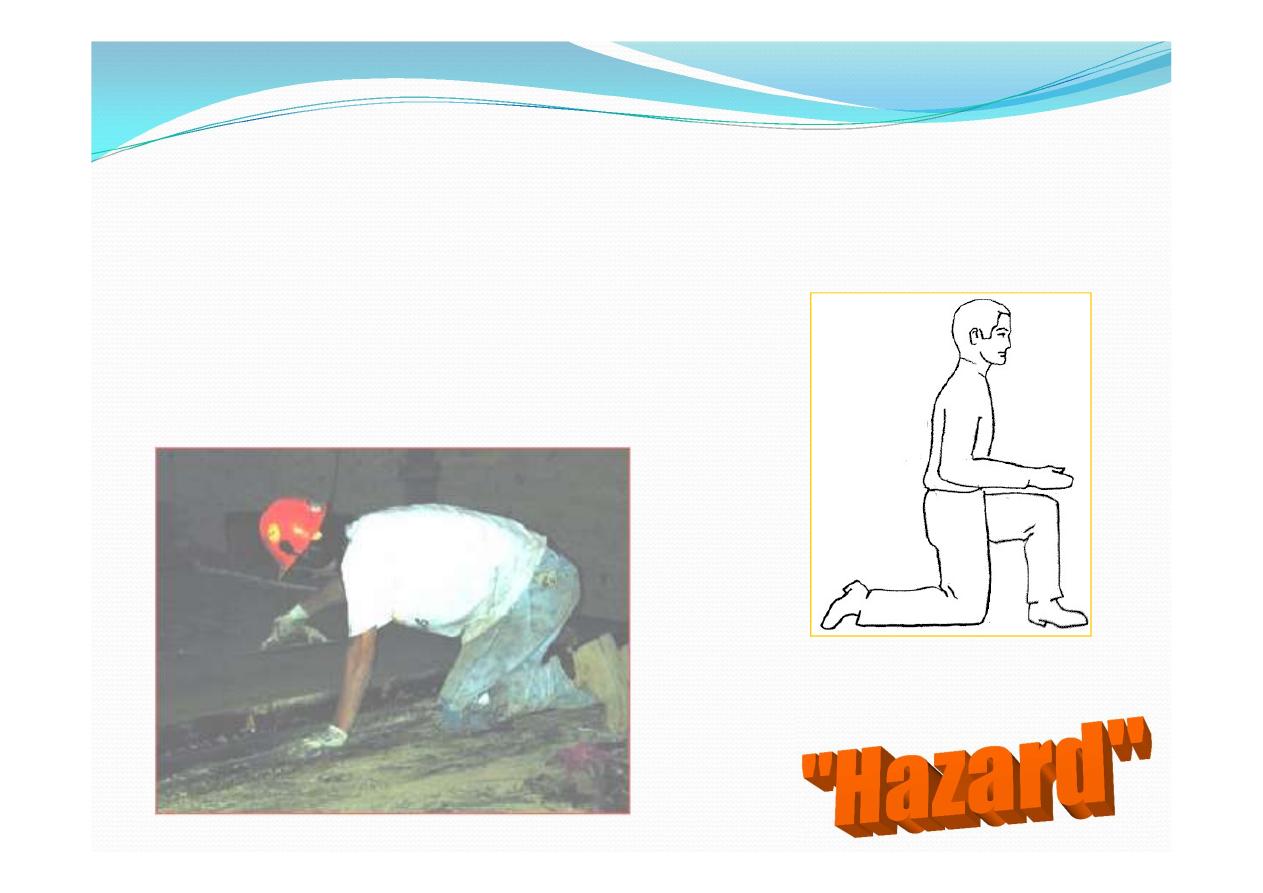
Awkward Positions
•Knees -k
neeling
More than 4 hrs/day
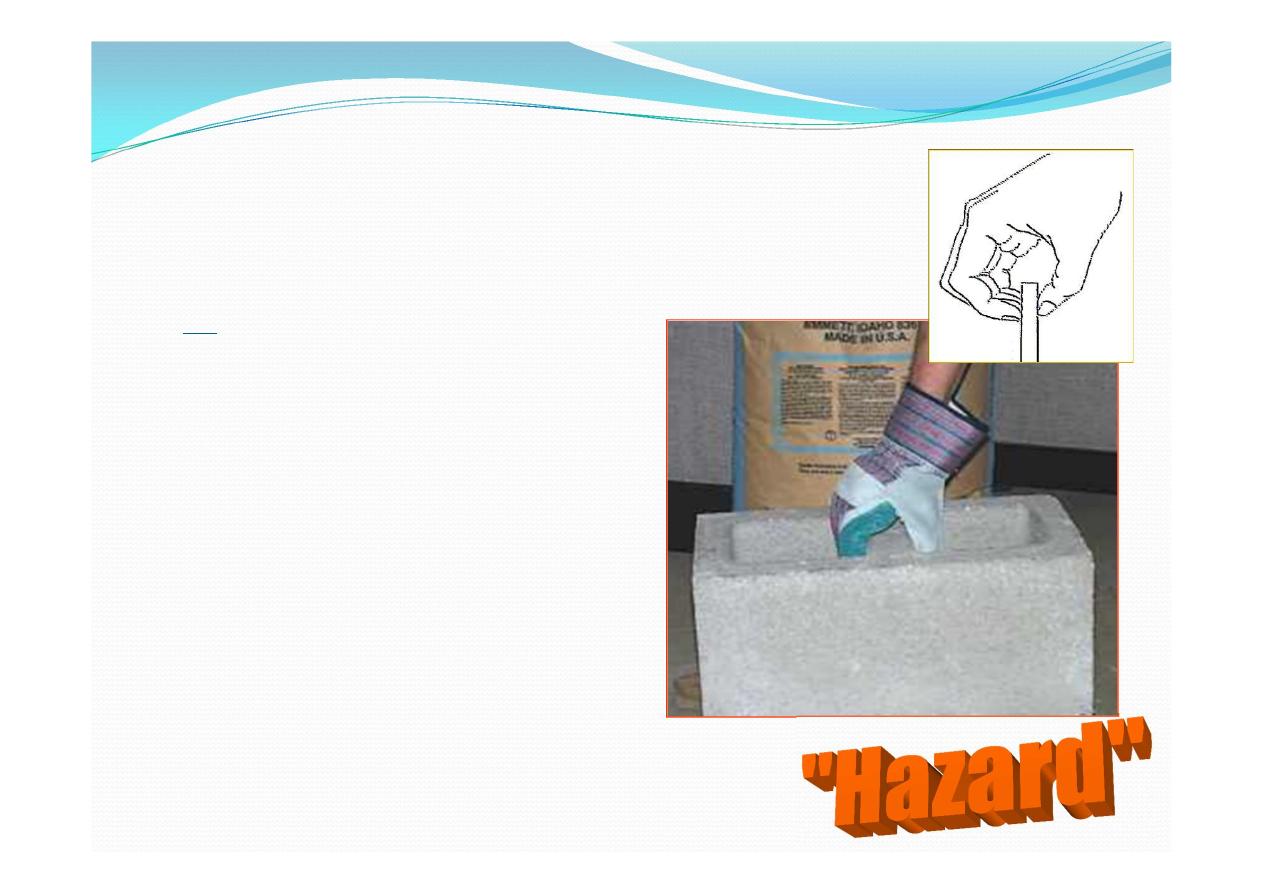
High Hand Force
•Arms, Wrists, Hands
–Pinching unsupported object 2 or
more pounds/hand
Or
–Pinching with force of 4 or more
pounds/hand (1/2 ream of paper)
+
–Highly repetitive motion
More than 3 hrs/day
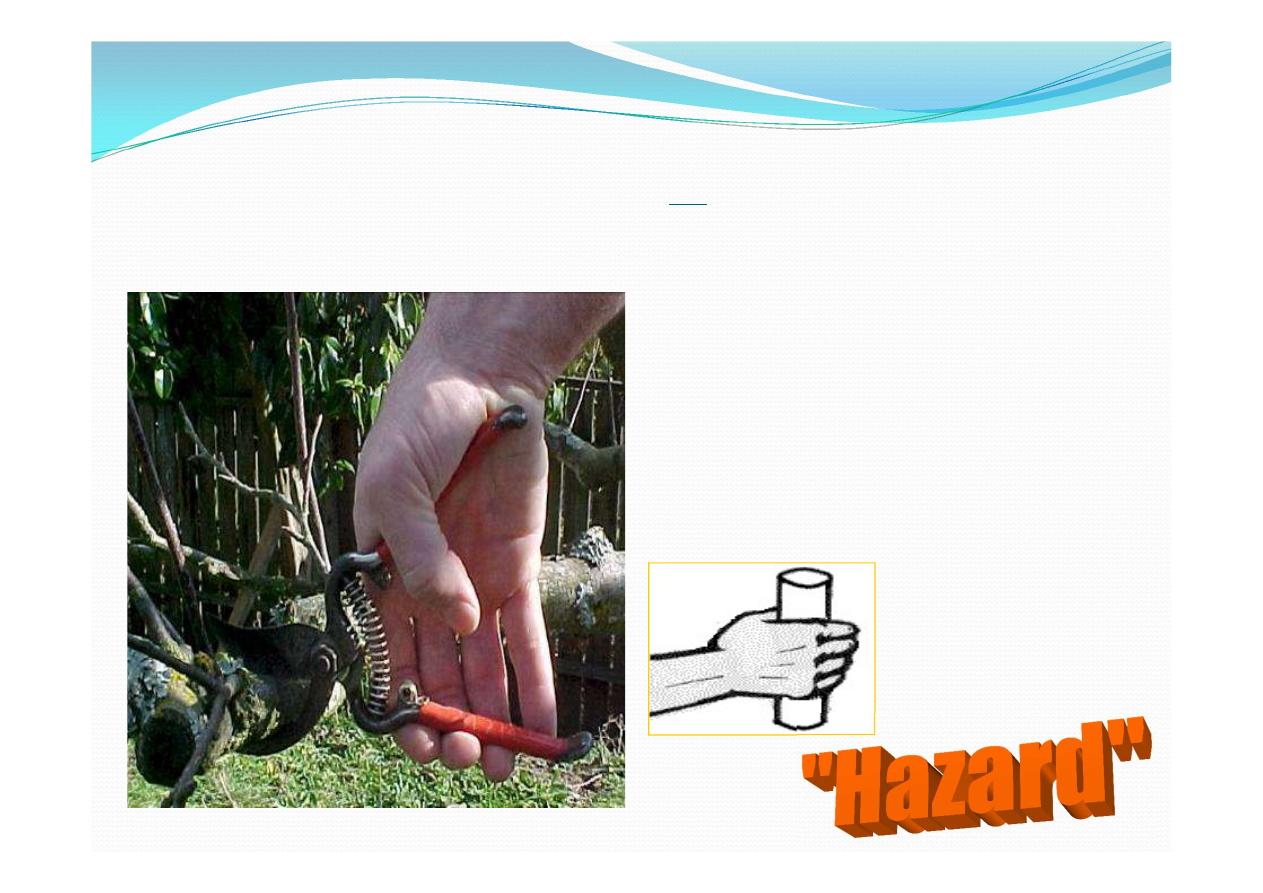
High Hand Force
•Arms, Wrists, Hands
–Gripping an unsupported object
10 lbs or > per hand
Or
–Gripping with force of 10 lbs or >
per hand (clamping light duty
jumper cables onto battery)
+
–Highly repetitive motion
More than 3 hrs/day
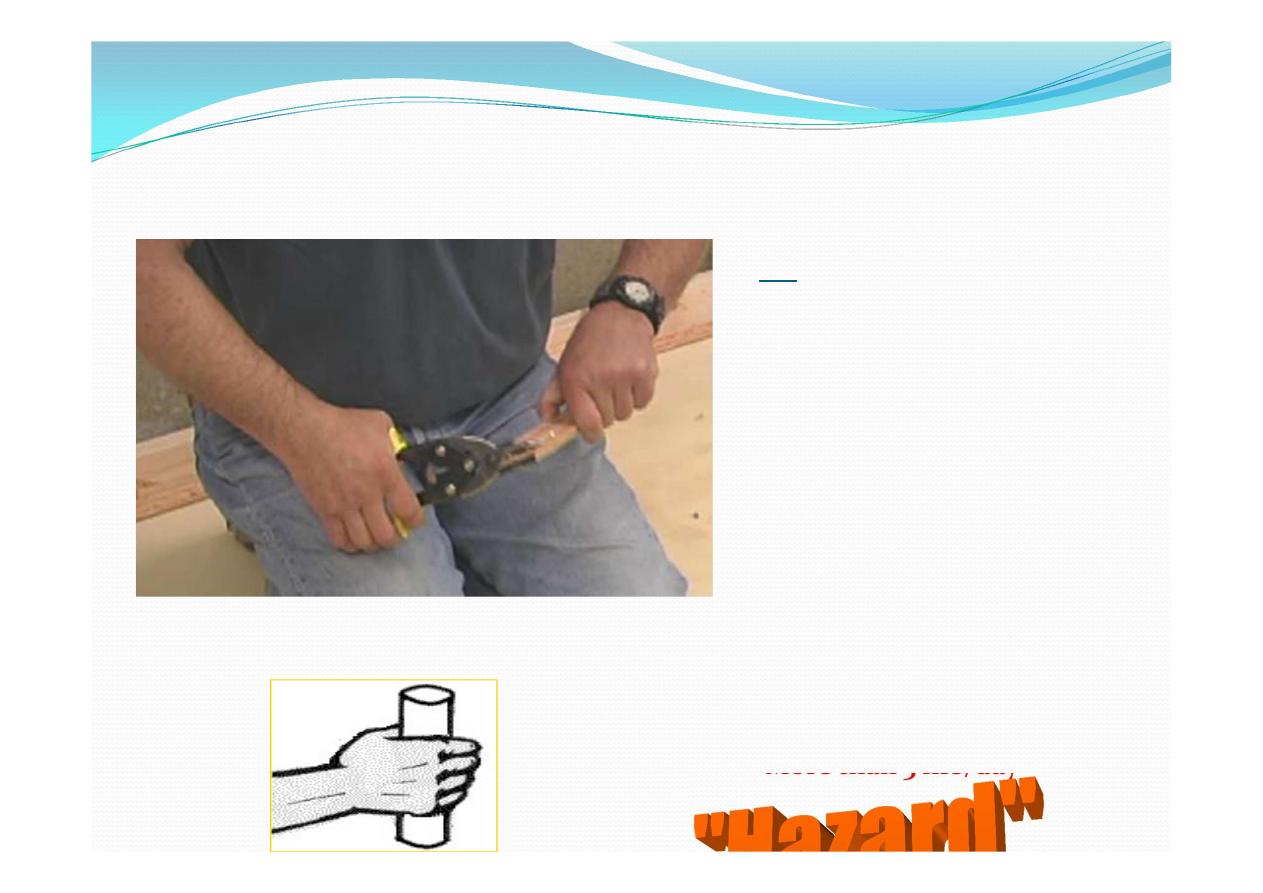
High Hand Force
•Arms, Wrists, Hands
–Gripping an
unsupported object 10 lbs
or > per hand
Or
–Gripping with force of 10
lbs or > per hand
(clamping light duty
jumper cables onto
battery)
+
–Wrists bent in flexion
30° or more, or in
extension 45° or more, or
in ulnar deviation 30° or
more
More than 3 hrs/day
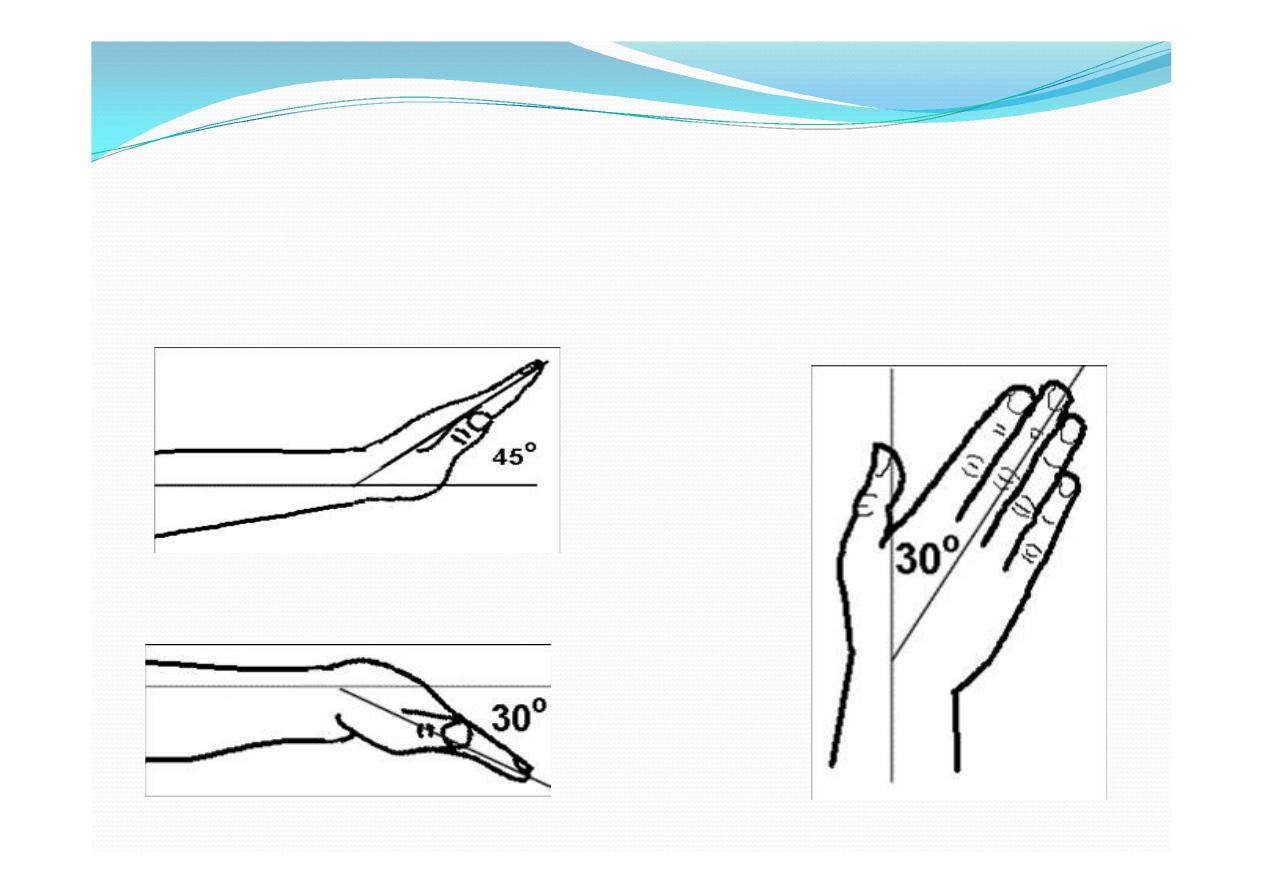
Wrists Bent
Extension
Ulnar Deviation
Flexion
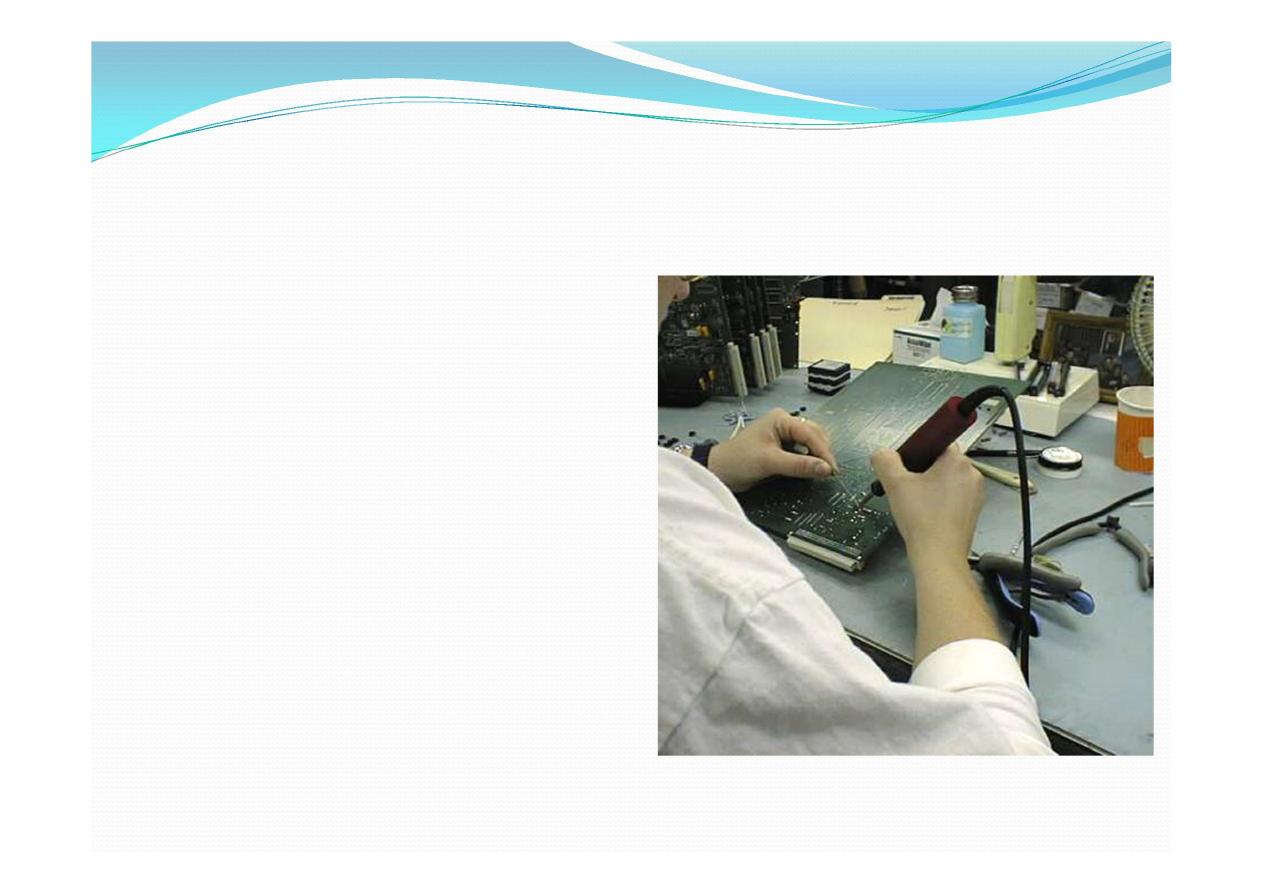
Awkward / Sustained Postures
Neutral posture is the
goal
Built-up handles
Avoid wrist deviation
flexion / extension
radial/ulnar deviation
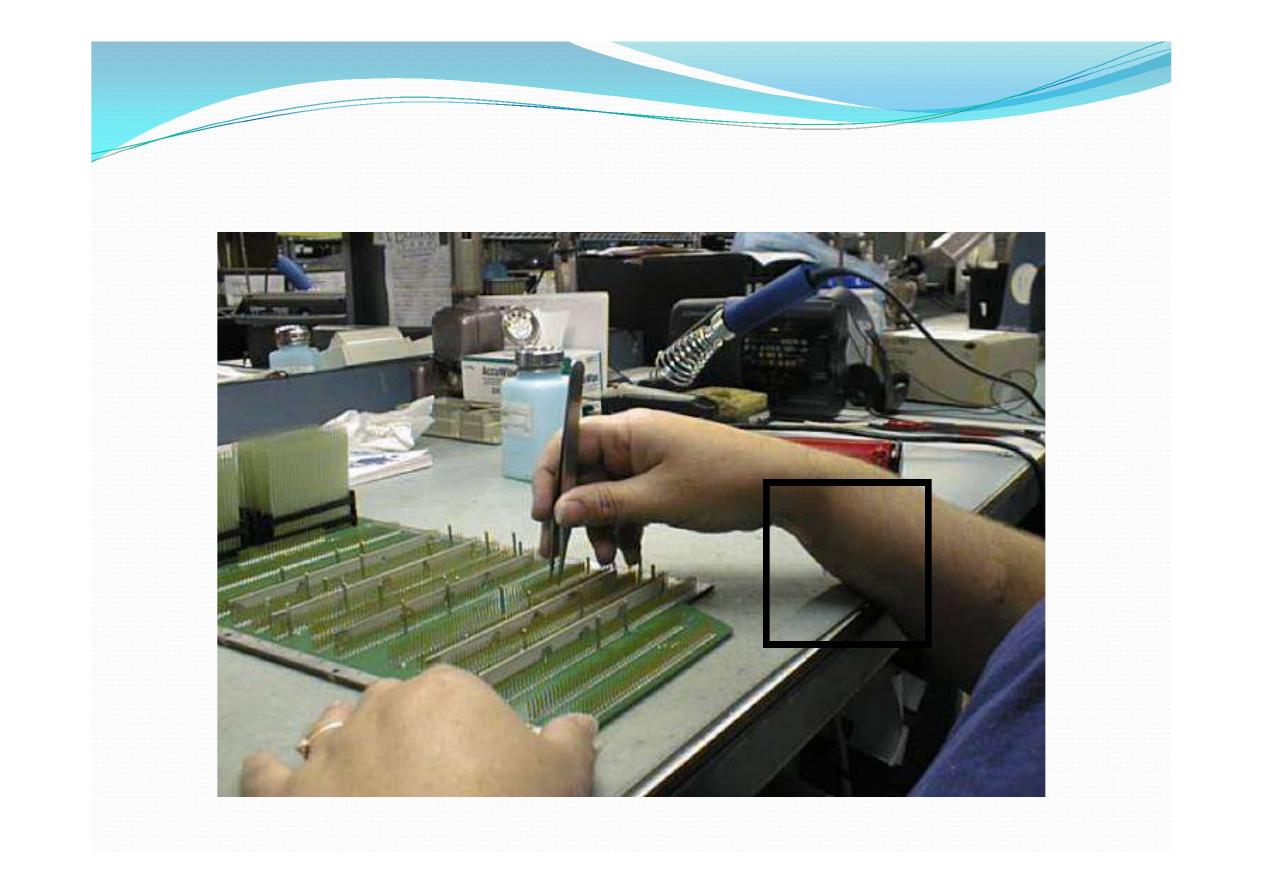
Mechanical Stress
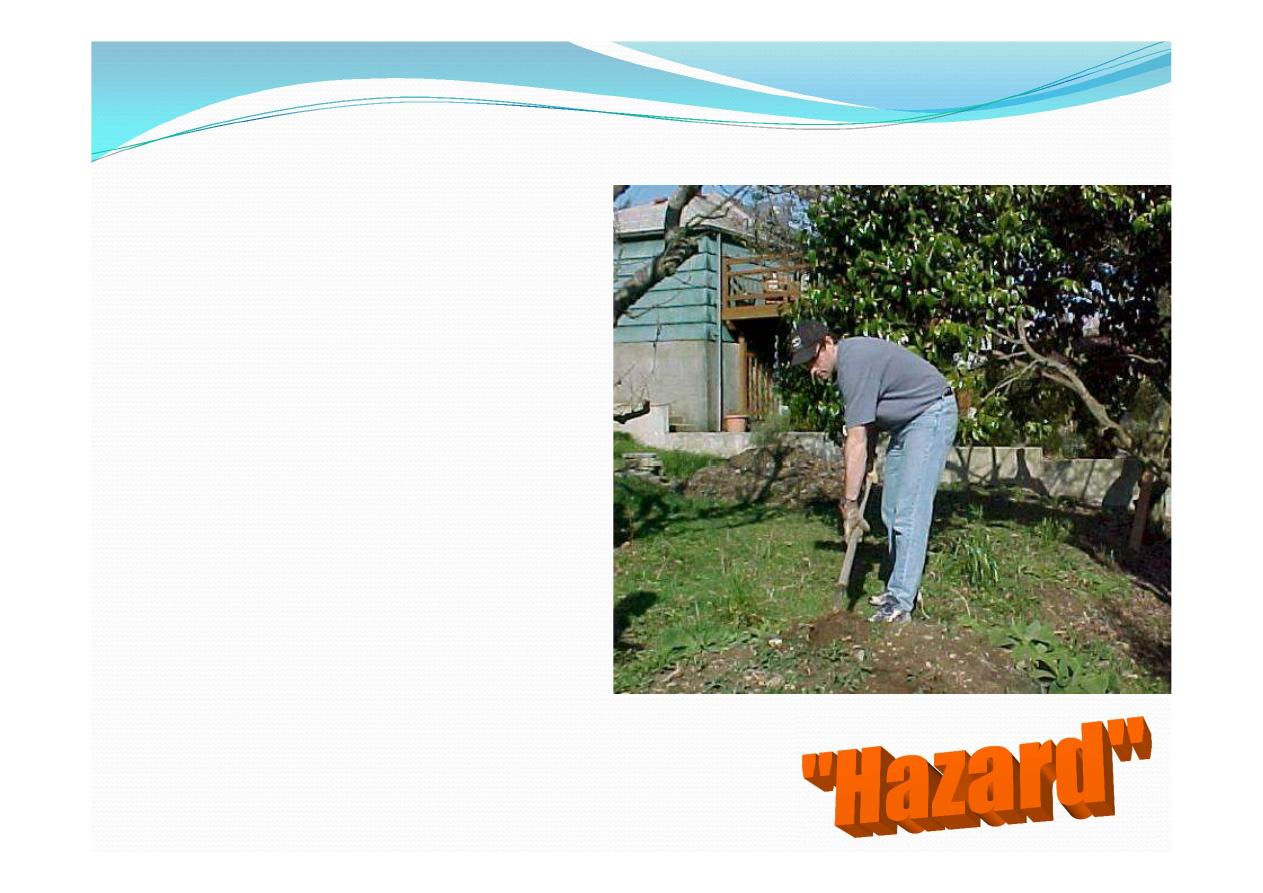
Highly Repetitive Motion
•Neck, Shoulders,
Elbows, Wrists, Hands
–Same motion every few
seconds with little variation
(Except Keying)
+
-No Other Risk Factors
More than 6 hrs/day
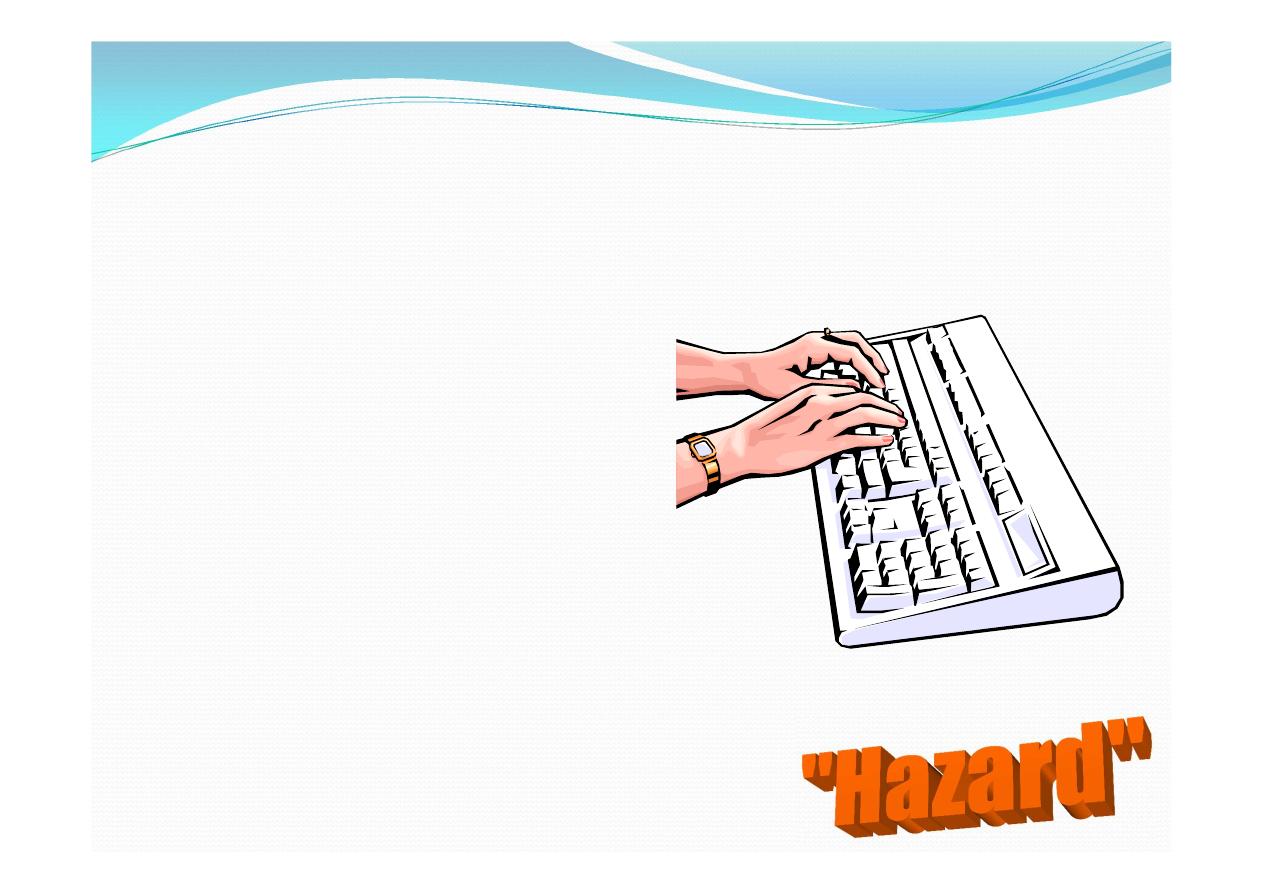
Highly Repetitive Motion
•Intensive
Keying
–No Other Factors
More than 7 hrs/day
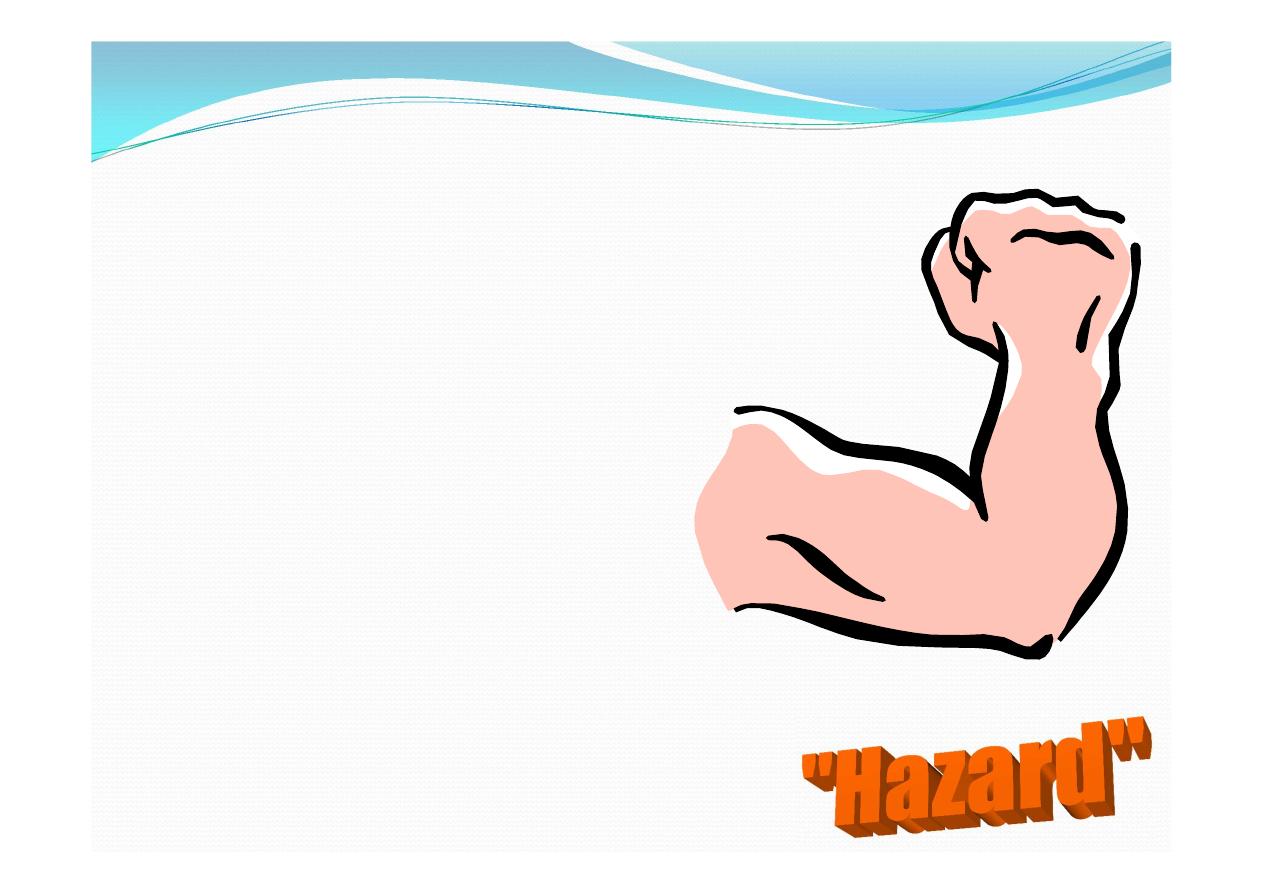
Repeated Impact
•Hands
–Using Hand (heel/base of palm) as
a Hammer more than once per
minute
More than 2 hrs /day
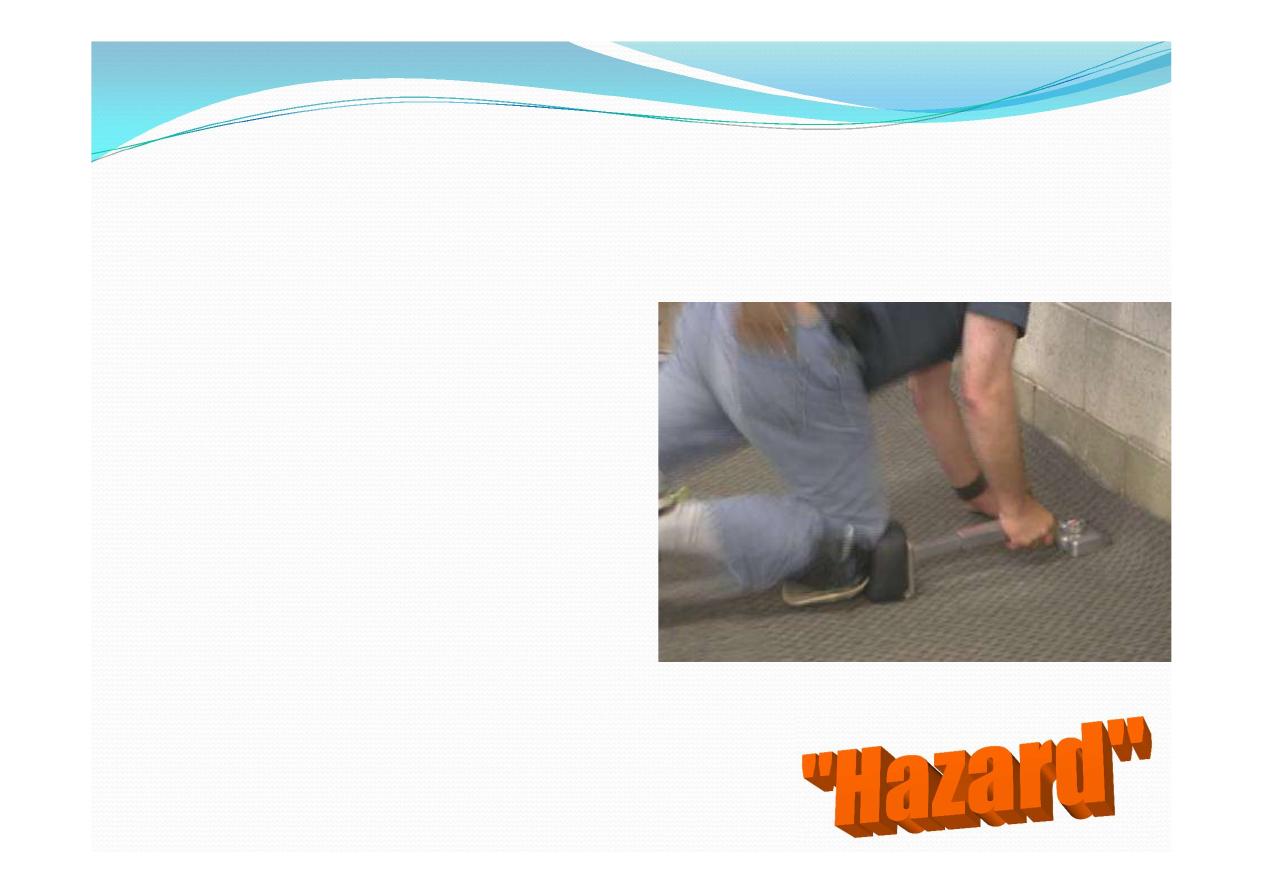
Repeated Impact
•Knees
–Using Knee as Hammer more than
once per minute
More than 2 hrs /day
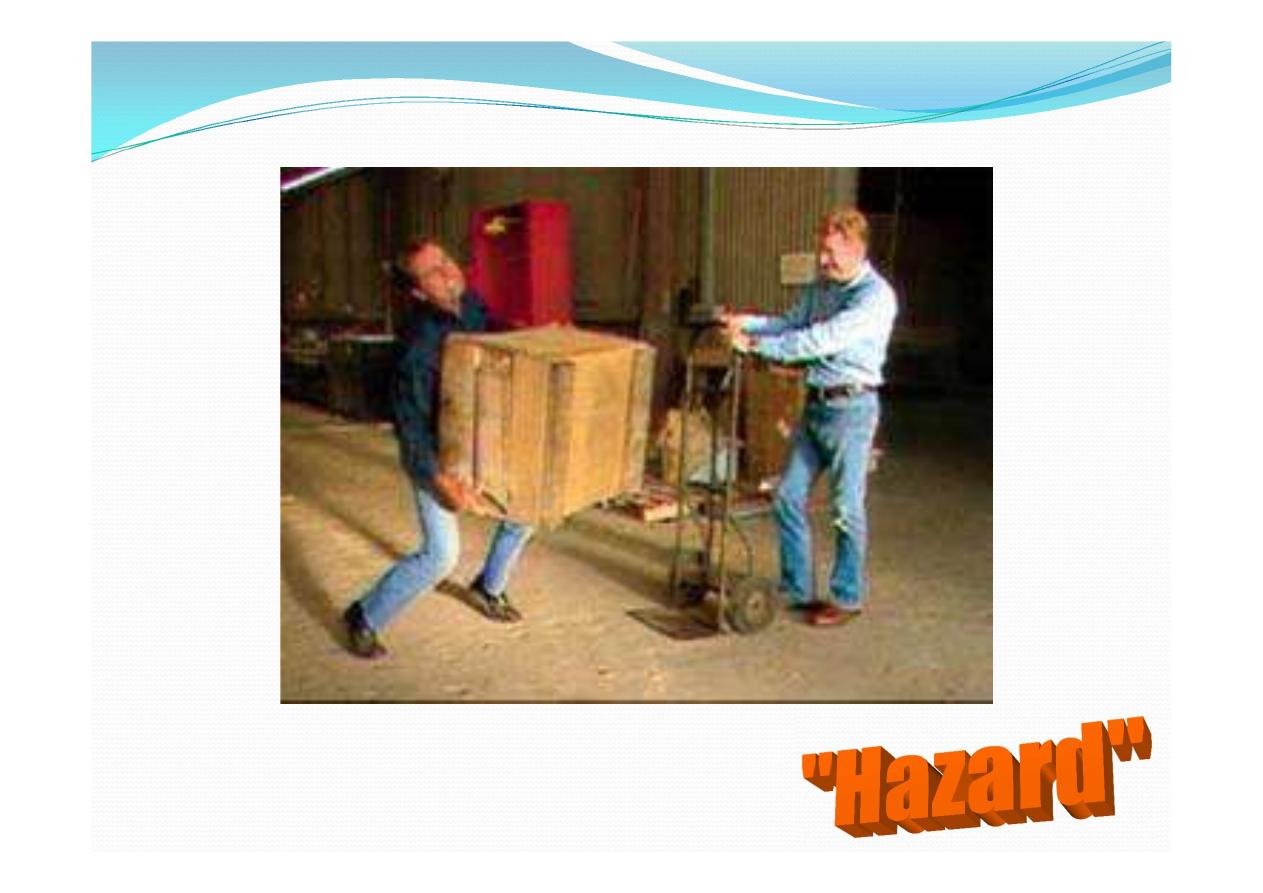
Heavy, Frequent, Awkward
Lifting

occupational accident

occupational accident
Accident is an unexpected event or unplanned
occurrence which may result in
Personal injury
Death
Property damage
Combination of serious effects
The victim may or may not be directly
involved in the cause of the accident.

occupational injury: any personal injury, disease or
death resulting from an occupational accident
occupational injury is therefore distinct from an
occupational disease, which is a disease contracted as a
result of an exposure over a period of time to risk factors
arising from work activity
occupational accident
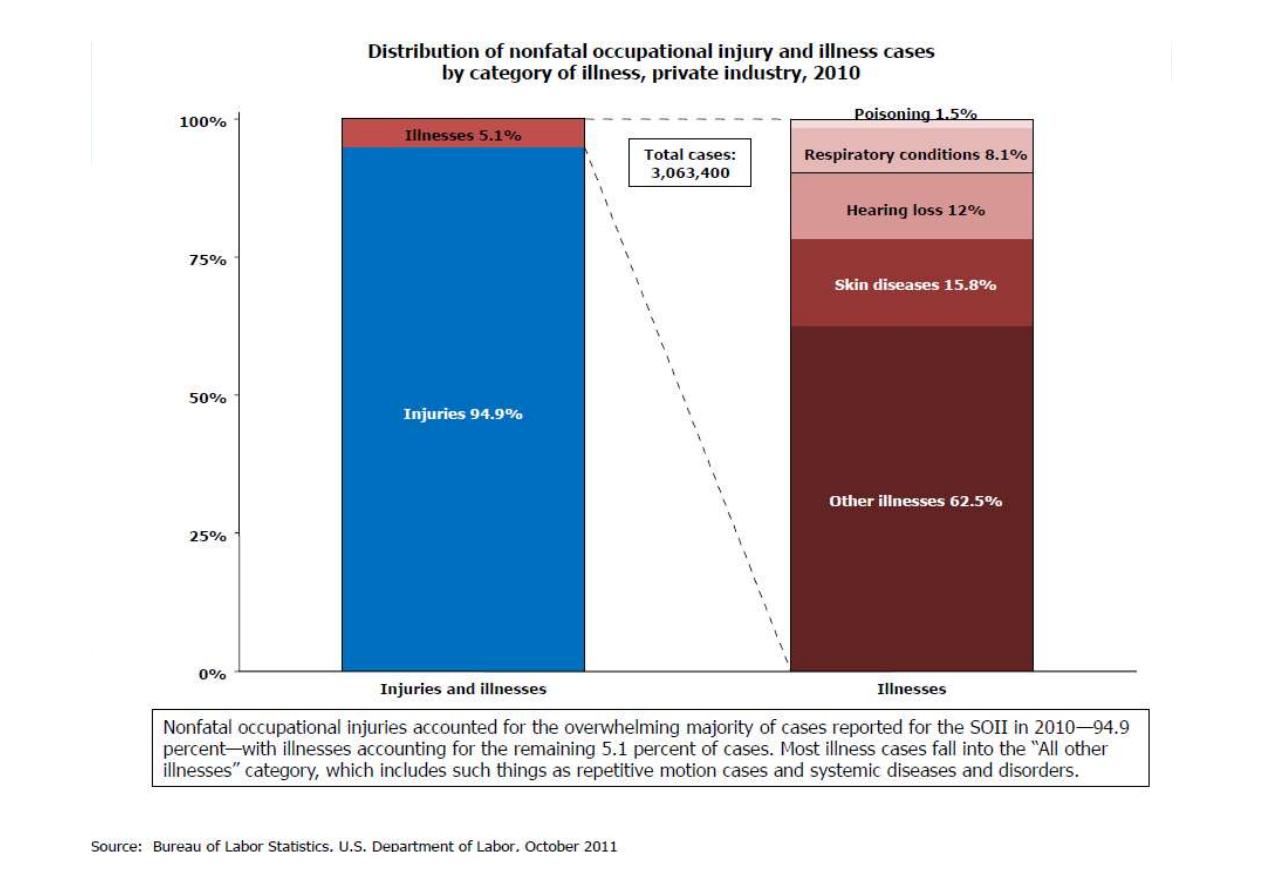

Types of Accidents
1.
Fall
2.
Slip
3.
Slide
4.
Collision
5.
Eruption or explosion
6.
Burns
7.
Being caught in or between mechanical or other
objects.
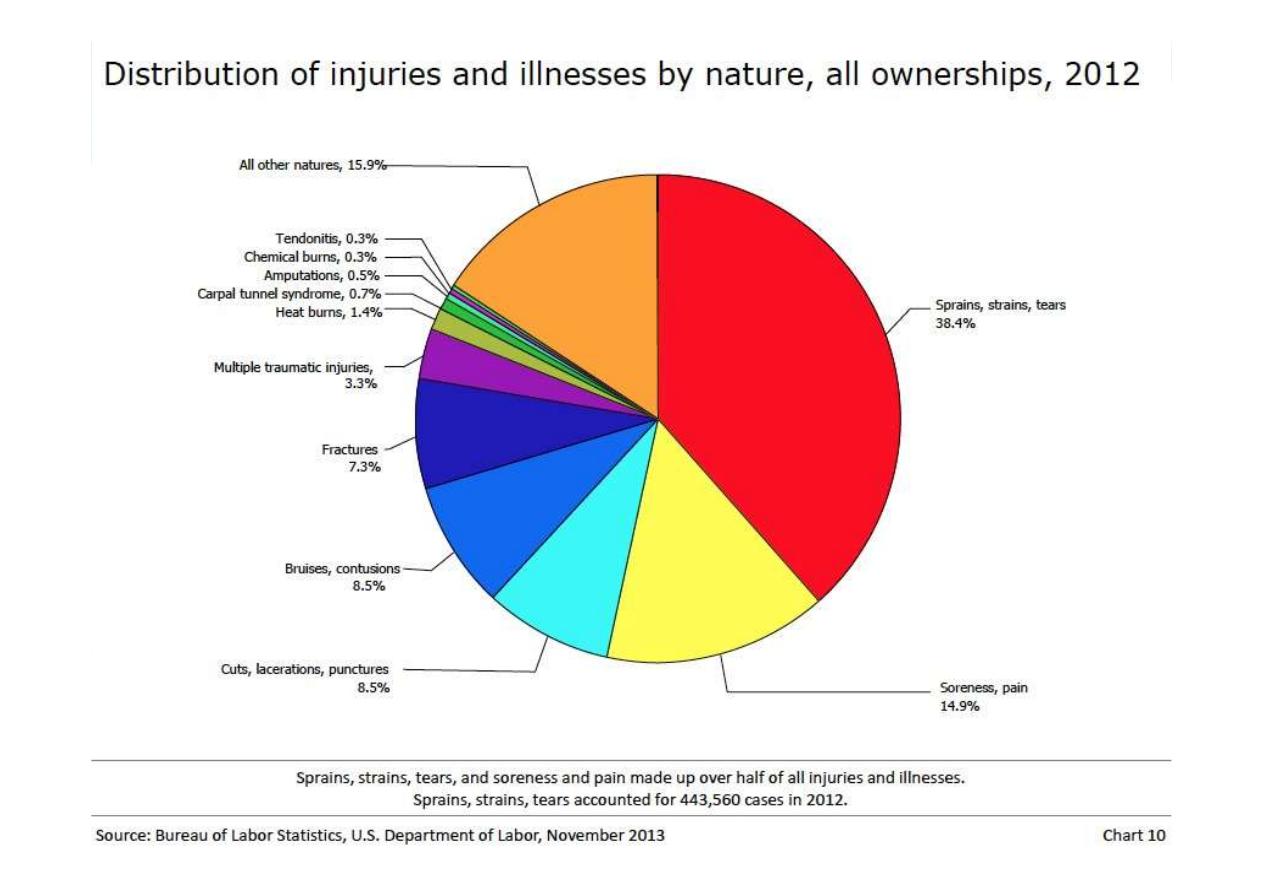
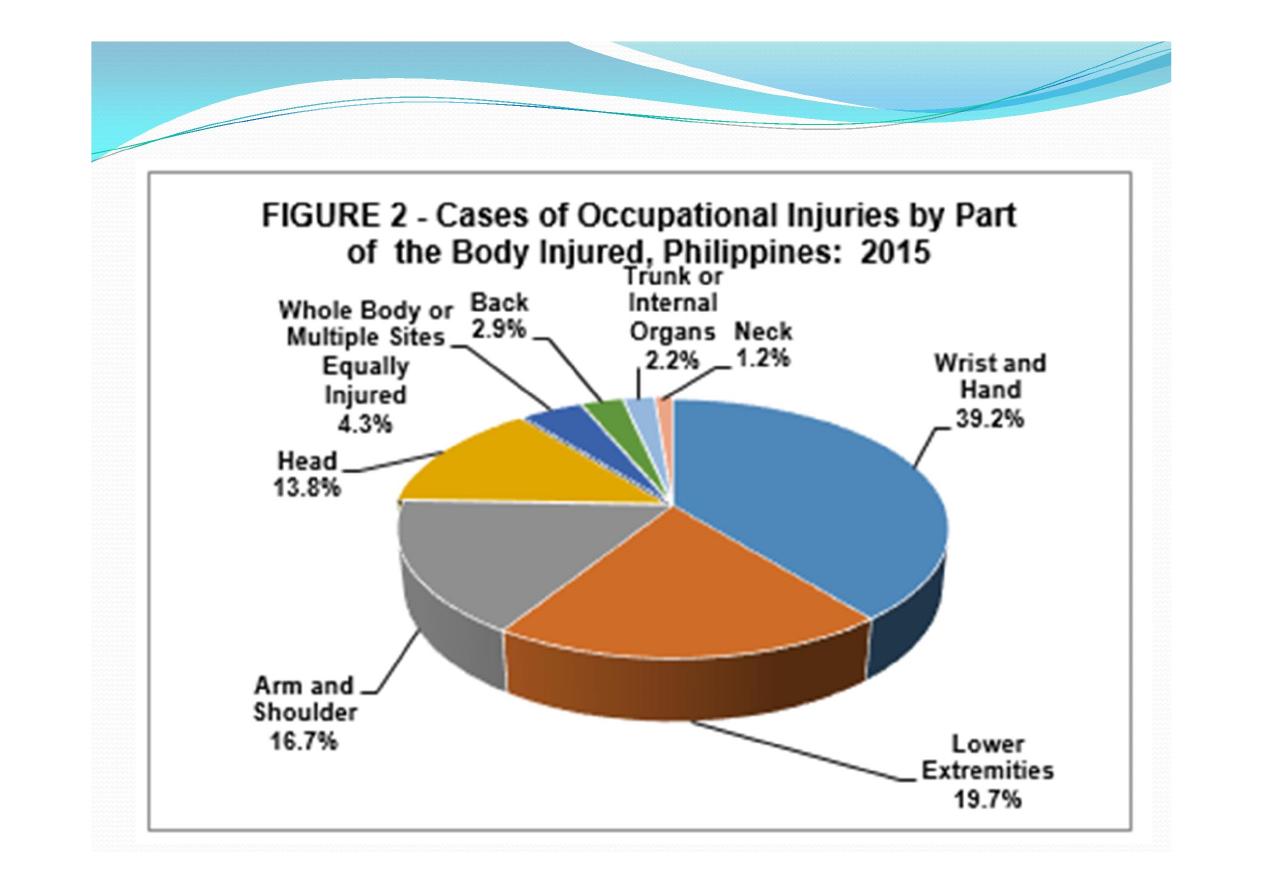
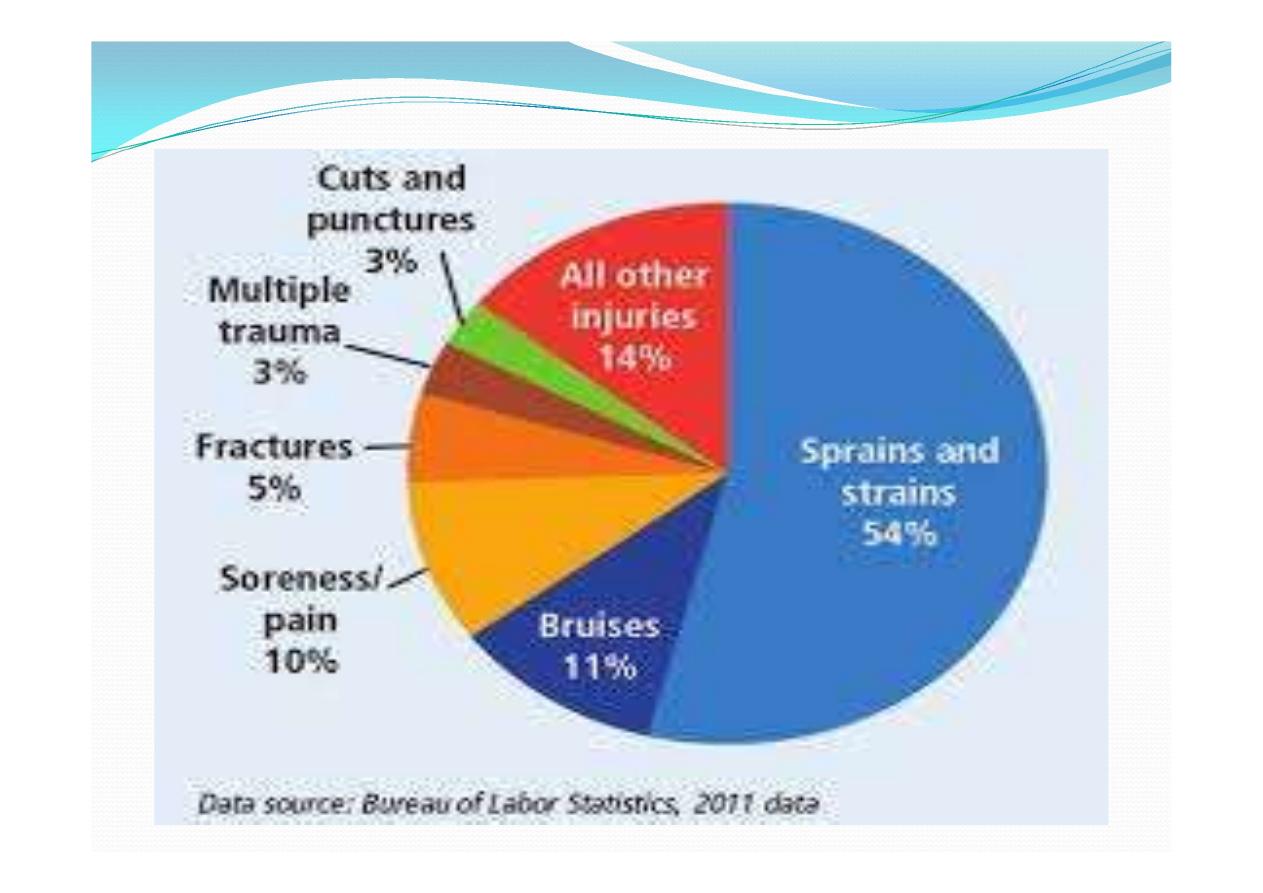

Causes and contributing factors
1. Unsafe Condition
No safety device although needed.
Ineffective safety device.
Equipments, tools, machines defective.
Improper illuminations, ventilation and so on.
Hazards not corrected.
Inadequate instructions or roles not enforced

Causes and contributing factors
2. Unsafe acts
Poor physical condition of the worker as deafness, poor
vision, extreme fatigue.
Protective equipment or guard provided but not used.
Improper tool or equipment used despite availability of
proper ones.
Hazardous method of handling (failure to watch for
sharp or slippery objects and pinch points; lifting; loose
grip, etc)
Hazardous movement (running, stepping on or climbing
over’ throwing, etc)

Prevention of Work Place Accidents

Prevention of accidents
Occupational risks assessment and taking action to
protect workers’ safety and health is an obligation of
each employer.

There are numerous measures considered as relevant for
accident prevention
1.
design and use of more safe equipment and
technologies or replacing dangerous equipment
and products by non-dangerous or less dangerous
ones
2.
improvement of working environment
3.
use and maintenance of personal protective
equipment
4.
management and staff training
5.
improvement of communication

THANKS
